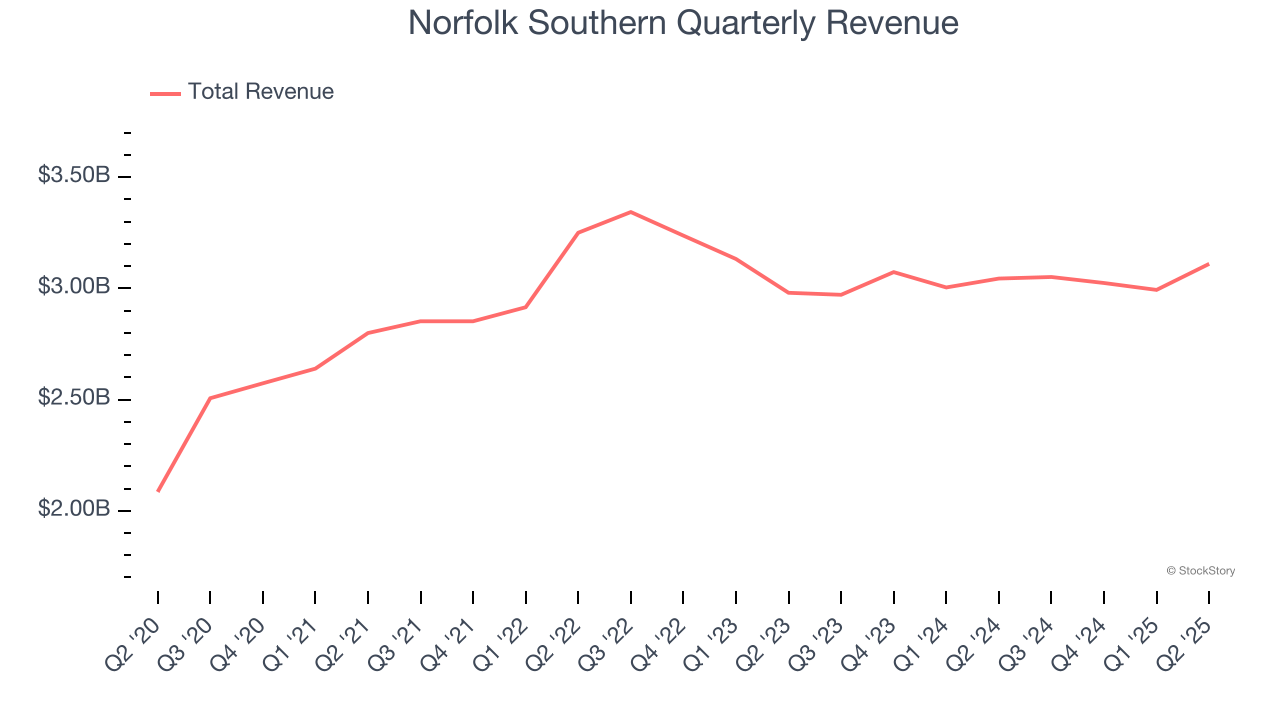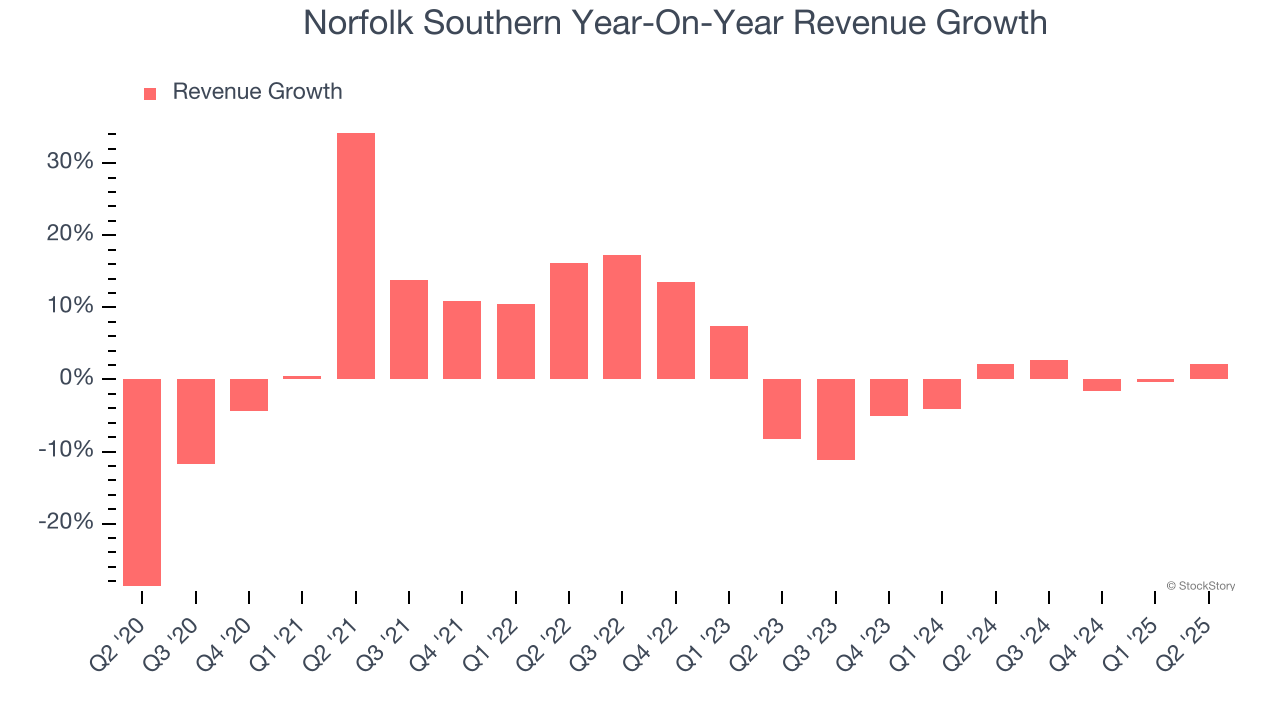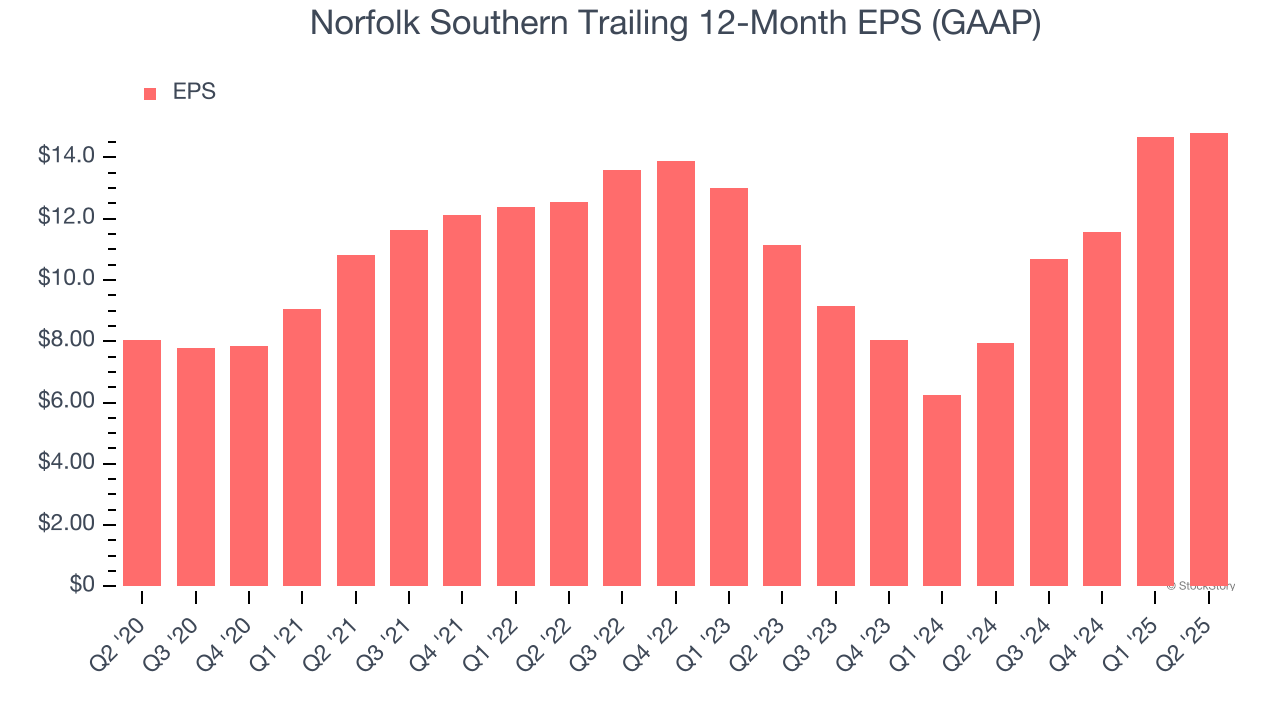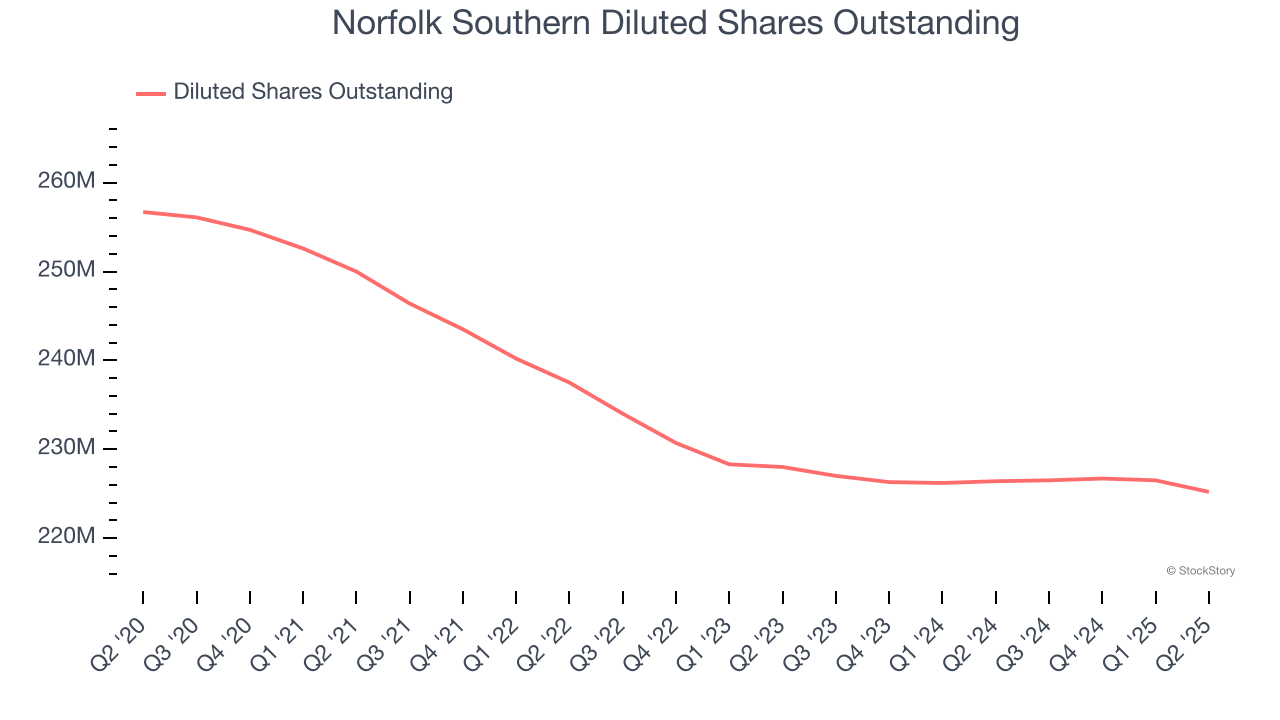
Freight transportation company Norfolk Southern (NYSE: NSC) missed Wall Street’s revenue expectations in Q2 CY2025 as sales rose 2.2% year on year to $3.11 billion. Its GAAP profit of $3.41 per share was 3.3% above analysts’ consensus estimates.
Is now the time to buy Norfolk Southern? Find out by accessing our full research report, it’s free.
Norfolk Southern (NSC) Q2 CY2025 Highlights:
- Union Pacific will acquire Norfolk Southern in a stock and cash transaction, implying a value for Norfolk Southern of $320 per share based on Union Pacific’s unaffected closing stock price on July 16, 2025, and representing a 25% premium to Norfolk Southern’s 30-trading day volume weighted average price on July 16, 2025. The value per share implies an enterprise value of $85 billion for Norfolk Southern, resulting in the creation of a combined enterprise of over $250 billion.
- Revenue: $3.11 billion vs analyst estimates of $3.14 billion (2.2% year-on-year growth, 0.8% miss)
- EPS (GAAP): $3.41 vs analyst estimates of $3.30 (3.3% beat)
- Adjusted EBITDA: $1.50 billion vs analyst estimates of $1.49 billion (48.3% margin, 0.8% beat)
- Operating Margin: 37.8%, in line with the same quarter last year
- Free Cash Flow Margin: 26%, up from 11.7% in the same quarter last year
- Market Capitalization: $64.57 billion
Company Overview
Starting with a single route from Virginia to North Carolina, Norfolk Southern (NYSE: NSC) is a freight transportation company operating a major railroad network across the eastern United States.
Revenue Growth
Reviewing a company’s long-term sales performance reveals insights into its quality. Any business can experience short-term success, but top-performing ones enjoy sustained growth for years. Unfortunately, Norfolk Southern’s 3.5% annualized revenue growth over the last five years was sluggish. This fell short of our benchmark for the industrials sector and is a poor baseline for our analysis.

Long-term growth is the most important, but within industrials, a half-decade historical view may miss new industry trends or demand cycles. Norfolk Southern’s performance shows it grew in the past but relinquished its gains over the last two years, as its revenue fell by 2% annually. Norfolk Southern isn’t alone in its struggles as the Rail Transportation industry experienced a cyclical downturn, with many similar businesses observing lower sales at this time. 
This quarter, Norfolk Southern’s revenue grew by 2.2% year on year to $3.11 billion, falling short of Wall Street’s estimates.
Looking ahead, sell-side analysts expect revenue to grow 3.2% over the next 12 months. While this projection suggests its newer products and services will fuel better top-line performance, it is still below average for the sector.
Software is eating the world and there is virtually no industry left that has been untouched by it. That drives increasing demand for tools helping software developers do their jobs, whether it be monitoring critical cloud infrastructure, integrating audio and video functionality, or ensuring smooth content streaming. Click here to access a free report on our 3 favorite stocks to play this generational megatrend.
Operating Margin
Norfolk Southern has been a well-oiled machine over the last five years. It demonstrated elite profitability for an industrials business, boasting an average operating margin of 34.2%. This result isn’t surprising as its high gross margin gives it a favorable starting point.
Looking at the trend in its profitability, Norfolk Southern’s operating margin rose by 3.4 percentage points over the last five years, as its sales growth gave it operating leverage. Its expansion was impressive, especially when considering the cycle turned in the wrong direction and most of its Rail Transportation peers observed plummeting revenue and margins.

This quarter, Norfolk Southern generated an operating margin profit margin of 37.8%, in line with the same quarter last year. This indicates the company’s cost structure has recently been stable.
Earnings Per Share
We track the long-term change in earnings per share (EPS) for the same reason as long-term revenue growth. Compared to revenue, however, EPS highlights whether a company’s growth is profitable.
Norfolk Southern’s EPS grew at a remarkable 13% compounded annual growth rate over the last five years, higher than its 3.5% annualized revenue growth. This tells us the company became more profitable on a per-share basis as it expanded.

We can take a deeper look into Norfolk Southern’s earnings to better understand the drivers of its performance. As we mentioned earlier, Norfolk Southern’s operating margin was flat this quarter but expanded by 3.4 percentage points over the last five years. On top of that, its share count shrank by 12.3%. These are positive signs for shareholders because improving profitability and share buybacks turbocharge EPS growth relative to revenue growth. 
Like with revenue, we analyze EPS over a shorter period to see if we are missing a change in the business.
For Norfolk Southern, its two-year annual EPS growth of 15.4% was higher than its five-year trend. We love it when earnings growth accelerates, especially when it accelerates off an already high base.
In Q2, Norfolk Southern reported EPS at $3.41, up from $3.25 in the same quarter last year. This print beat analysts’ estimates by 3.3%. Over the next 12 months, Wall Street expects Norfolk Southern’s full-year EPS of $14.81 to shrink by 10.6%.
Key Takeaways from Norfolk Southern’s Q2 Results
Union Pacific will acquire Norfolk Southern in a stock and cash transaction, implying a value for Norfolk Southern of $320 per share based on Union Pacific’s unaffected closing stock price on July 16, 2025, and representing a 25% premium to Norfolk Southern’s 30-trading day volume weighted average price on July 16, 2025. The value per share implies an enterprise value of $85 billion for Norfolk Southern, resulting in the creation of a combined enterprise of over $250 billion.
As for the quarter, it was encouraging to see Norfolk Southern beat analysts’ EPS expectations this quarter. We were also happy its EBITDA narrowly outperformed Wall Street’s estimates. On the other hand, its revenue slightly missed. Overall, this quarter could have been better. The stock traded down 2.5% to $279.39 immediately following the results.
Is Norfolk Southern an attractive investment opportunity at the current price? If you’re making that decision, you should consider the bigger picture of valuation, business qualities, as well as the latest earnings. We cover that in our actionable full research report which you can read here, it’s free.




